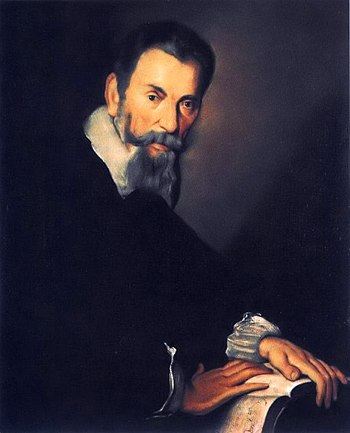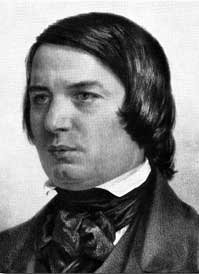Classical music of the common practice era is divided into 3 main periods, that each have distinct styles and forms. While there is a little overlap between each period, it is universally recognized that the baroque period came first, followed by the classical, and romantic romantic periods respectively.
 |
| Claudio Monteverdi by Bernardo Strozzi, (Photo credit: Wikipedia) |
The Baroque Period (1600-1760)
The baroque period is characterized by music that is very structured and in "high form". It also is known that many of the compositions that were written in this musical era were extremely contrapuntal and contained many fugues and fugue like passages. Contrapuntal music, or music with counter-point, is polyphonic in nature and features at least two musical voices, or melodies. These voices work against each other, and when one voice is stagnant for a while the other voice tends to doing something interesting melodically. A fugue is a formal method of counter point, where one theme is repeated in different voices complementing it. The baroque era is represented by such composers as J.S. Bach, Antonio Vivaldi, George Friderick Handel, Arcangello Corelli, Claudio Monteverdi, and Henry Purcell.
The Classical Period (1750-1830)
The classical period takes place from the middle of the 18th century to about a quarter's way through the 19th. The classical period brought many changes to music as the greatest proportion of music was played for the wealthy upper-class nobles. This called for a drastic increase for comic operas, it also called for a decrease in the importance of a continuo part. The continuo is the harmonic fill beneath the music, commonly played by several instruments including a harpsichord.
Classical music is marked by a clearer texture than baroque music and was increasingly homophonic. Homophonic means that a chordal accompaniment supports a melody above it. The orchestra of the classical period increased and the harpsichord was replaced by the piano-forte. Early piano music was very simple and light in texture but as the classical period went on, it became richer and more sonorous.
The main kinds of compositions were sonatas, trios, string quartets, symphonies, concertos, serenades and divertimentos. The sonata form developed and became the most important form. It was used to build up the first movement of most large-scale works, but also other movements and single pieces, such as overtures. The most famous composers of the classical period include Mozart, Beethoven*, Haydn, and Schubert. (*Beethoven was a crucial factor in the movement towards the romantic period and can be classified as both classical and romantic)
 |
Robert Schumann (June 8, 1810 – July 29, 1856)
(Photo credit: Wikipedia)
|
The Romantic Period (1815-1910)
The romantic period does not necessarily refer to romance love. instead the pieces written during this time are considered to be more passionate and expressive. Chromaticism and dissonance grew more varied as well as modulations and the properties of the 7th chord. Composers such as Beethoven and Wagner used many new chords that increased the harmonic language of the time. Composers of the romantic period include Beethoven, Schubert, Schumann, Mendelssohn, Weber, Chopin and Franck.
Article Source: EzineArticles |

No comments:
Post a Comment